Enhanced Coordination for Effective Disaster Preparedness and Response
October 17, 2022
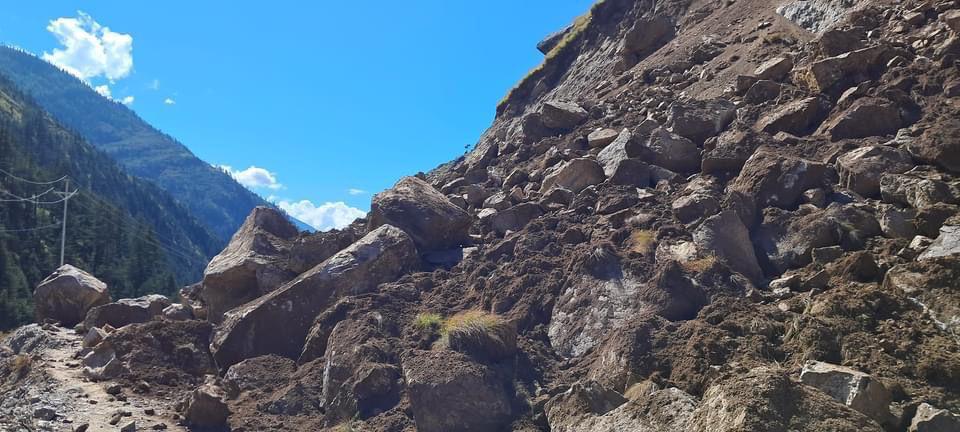
In the first week of October this year, parts of Nepal witnessed unexpected climate disasters. Sudden unseasonal rain across the country resulted in flooding and landslides, incurring huge loss of lives and property.
Karnali Province was particularly hit by the October rain. The Daily Situation Report, released by the Ministry of Internal Affairs and Law (MoAIL), in Karnali Province from 11 October 2022 shows that 15 disaster related incidents have occurred, 16 people have lost their lives, 4 have gone missing, 5 injured, and 22 livestock affected – all just in one day.
When the country was celebrating one of its biggest festivals, Dashain, Sub-Inspector of Nepal Police Sher Bahadur Chaudhary was busy updating the virtual reporting dashboard at the Provincial Emergency Operation Centre (PEOC), inside the Ministry as he keeps track of the evolving situation in Karnali province as the technical operator. He is surrounded by maps and charts, and he moves ever so often to update the chart in his office.
“When the rain continued pouring, we started monitoring the incidents. Our hotlines kept us busy reporting what was happening on the ground,” said Chaudhary, who, along with four other colleagues, kept reporting all the incidents to the central database 24/7.

Sub-Inspector of Nepal Police Sher Bahadur Chaudhary at the Provincial Emergency Operation Centre in Karnali.
“We get calls and information from the District Emergency Operation Centre (DEOC) or the residents about the disasters. We then pass this information on to the Ministry of Internal Affairs and Law in the province, as well as the National Emergency Operation Centre. And this information helps us mobilize responses from the provincial government to them. In fact, this information management has been vital in tracking the evolving disaster induced by the October rains.”
The PEOC is part of the larger Emergency Operation Centre (EOC) network set up by the Government of Nepal to prepare against and respond to disasters. Such centers exist at the district level, the provincial level, and the national level. Emergency Operation Centres are also being established at local levels. They serve as a coordination and communication point for disaster information across Nepal and are operational 24/7.
The Disaster Risk Reduction and Management Focal Person at the Ministry in Karnali, Mr. Krishna Bahadur Rokaya, shares, “Keeping a record of the disasters helps us to mobilize resources for immediate humanitarian response and mitigation as well. Even in this current context, we are relying on the information we have to respond to and provide immediate relief to those affected by the torrential rains. Our main goal is to ensure no life is lost and that there are minimal damages. However, the task at hand can sometimes be so vast that we can always benefit from extra support.” The PEOC in Karnali is staffed by four people, where one person is on constant standby for a twenty-four-hour shift.
The Karnali Province is prone to multiple hazards throughout the year like fire, lightening, flood, landslide, depending on the weather patterns. Therefore, the region suffers from an imminent threat from hazards, further aggravated by urban development. As per the data from the PEOC, Karnali province has recorded a total of 204 disaster related incidents in the past six months, with data showing that 13 women have been affected.
Precisely in order to support the Government of Nepal to scale up its capacity to prepare against and respond to such disasters, the European Union Humanitarian Aid has been providing financial support through the Strengthening Urban Preparedness, Earthquake Preparedness and Response in Western Regions of Nepal (SUPER) project to select EOCs in parts of Western Nepal.
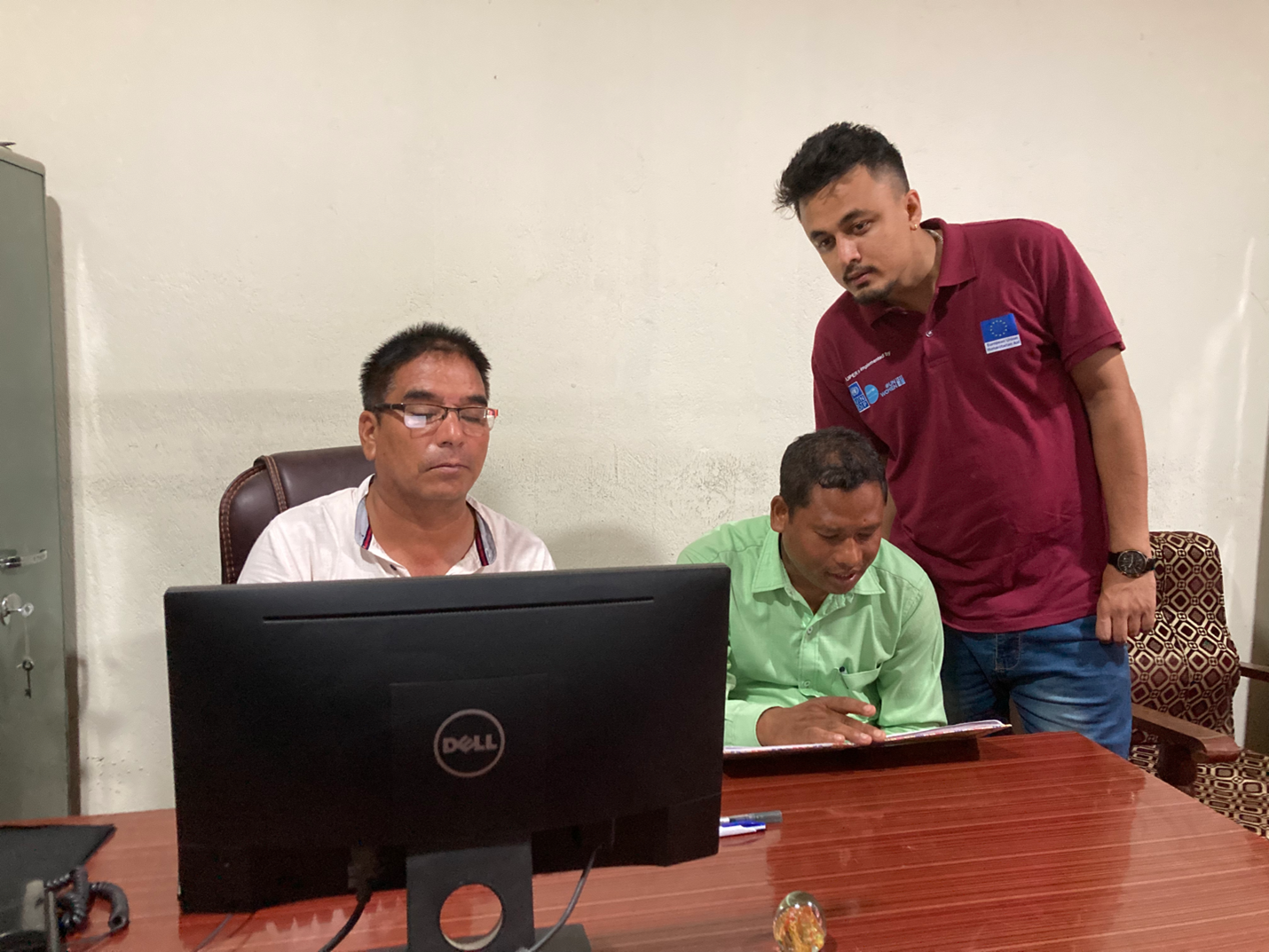
Mr. Khadka (right) works with Mr. Chaudhary (centre) and Mr Rokaya (Left) to update the situation report at the Provincial Emergency Operation Centre in Karnali.
“I have been preparing daily situation update reports at the PEOC. These reports include updates on the instances of disasters, the number of casualties, missing, injured, affected, and displaced from across the districts in the province. Moreover, they also include a Weather Forecast Bulletin. These reports are circulated to the District EOCs, the Ministries in the province, security focal points including the Nepal Army, the Nepal Police, Armed Police Force, Rastriya Anusandhan Aayog, the Humanitarian Working Groups, stakeholders in the province working on disaster preparedness and response,” elaborates Mr. Sankalpa Khadka, Information Management Officer at the PEOC.
Mr. Khadka has been overseeing the production of the situation update reports, as he works to facilitate a quick and efficient flow of information exchange on disasters. He adds, “In the days to come, I will work on making hazard and vulnerability maps for the province to realistically gauge the threat posed by the disasters.” Mr. Khadka has been placed at the PEOC through the SUPER project to support the PEOC in their information management endeavors, as well as to ensure knowledge transfer to the PEOC to ensure sustainability.
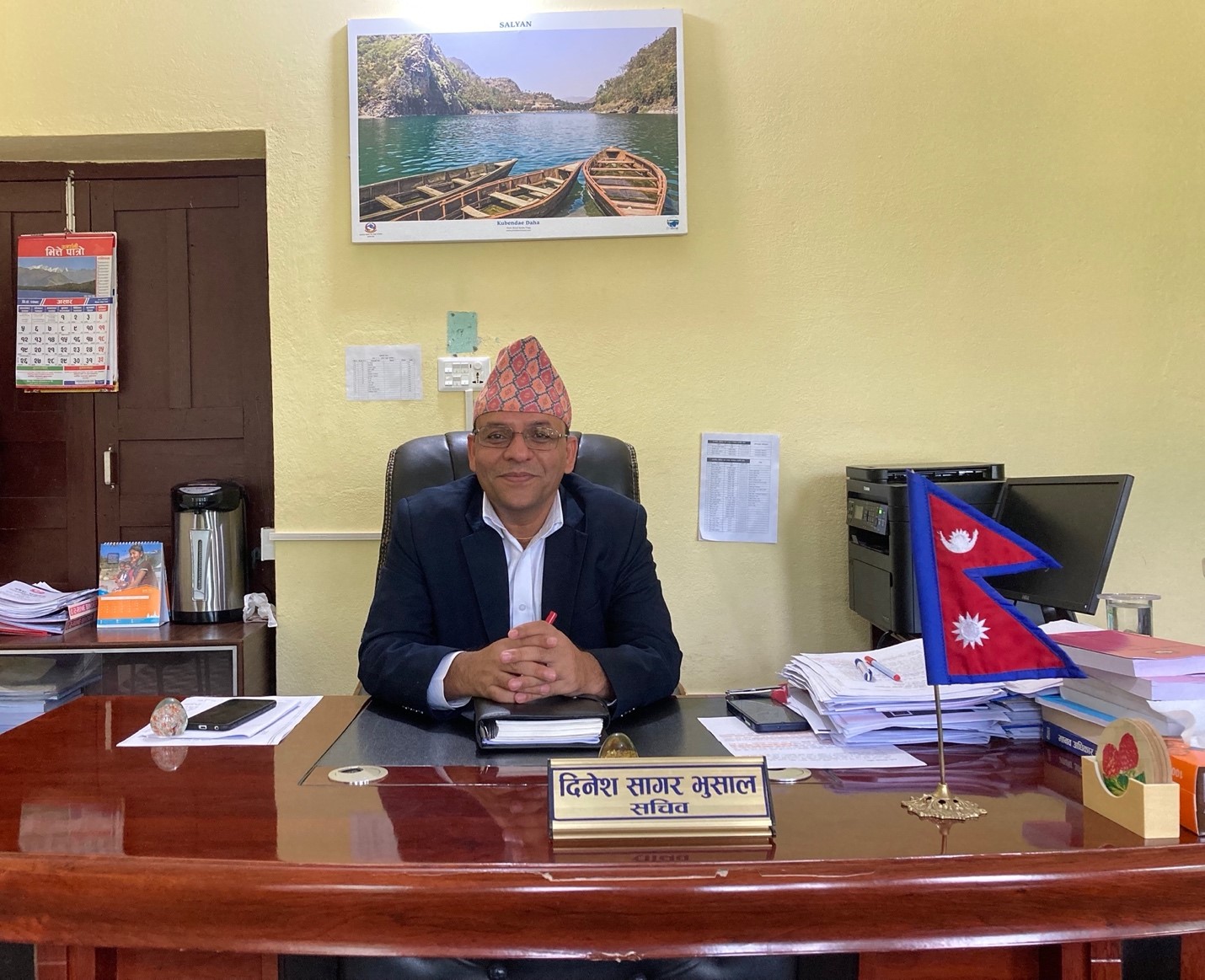
The Secretary at the MoAIL, Karnali, Mr. Dinesh Sagar Bhushal.
SUPER’s Provincial Coordinator of Karnali Province, Ms. Yamuna Suwal reflects, “Disasters disproportionately affect the women and girls. This is why we have been working with the Province government to keep track of how the current disaster and other disasters have been affecting them to respond to their needs. A key way in which we do this is by working with the PEOC to keep track of the data through the Daily Situation Reports.”
The Secretary at the MoAIL, Karnali, Mr. Dinesh Sagar Bhushal, says, “The PEOC is an important link in the coordination mechanism for disaster response and preparedness. And we are proud to have initiated good practices such as the situation update reports. However, there is more we can do to strengthen the capacity of the PEOC, particularly in strengthening the human resources to deal with disasters.”
In order to facilitate effective disaster response, the PEOC has initiated activities like outreach through Facebook page; keeping a database of important personnel, ambulance, firefighters, hospitals and bed capacity, open spaces, schools in the province with technical support from the SUPER. This process is also allowing for knowledge transfer from the Information Management Officer to the government officials placed at the PEOC. “I learn from Sankalpa Sir every day, and am able to better use technology to map disaster in the province,” shares Sub-Inspector Chaudhary.
SUPER, under the EU Humanitarian Aid’s generous financial support, is being implemented by UNDP, UNICEF and UN Women. In Karnali province, the project’s local implementing partner is Social Awareness Centre (SAC) Nepal. The project seeks to enhance municipal and provincial preparedness for impending urban and earthquake risks for effective disaster response in select places in the western regions of Nepal. It operates at the provincial level in Lumbini Province, Karnali Province and Sudurpaschim Province; and at the municipal level in Nepalgunj Sub Metropolitan City, Dhangadhi Sub Metropolitan City, Amargadhi Municipality and Jay Prithvi Municipality. Through SUPER’s support, two Local Emergency Operation Centres, in Amargadhi and Dhangadhi have been inaugurated; and all three Municipal EOCs in Amargadhi, Dhangadhi, and Nepalgunj have come into operation to further strengthen the EOCs. The facebook page for the Municipal EOC in Dhangadhi is available here; that for Amargadhi is available here; and that for Nepalgunj is available here.
Link to EOCs explainer video here
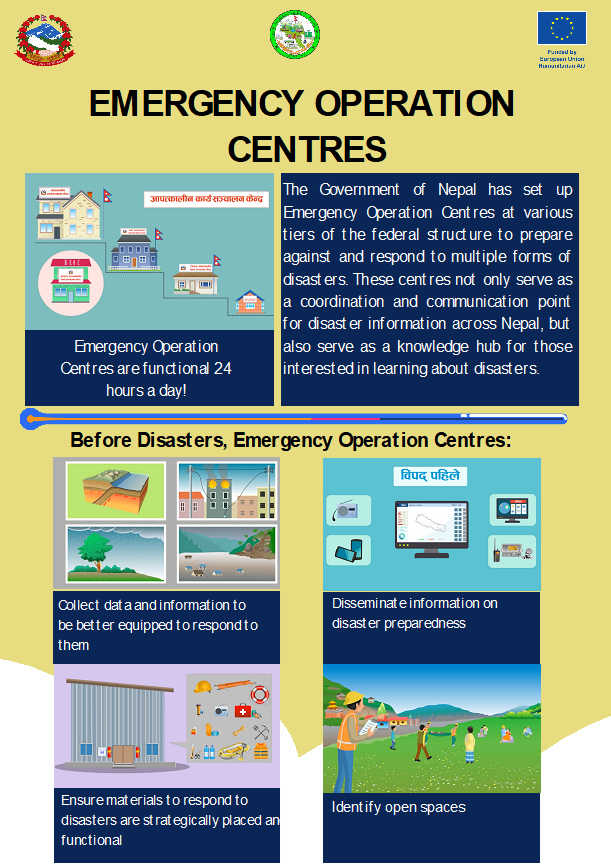
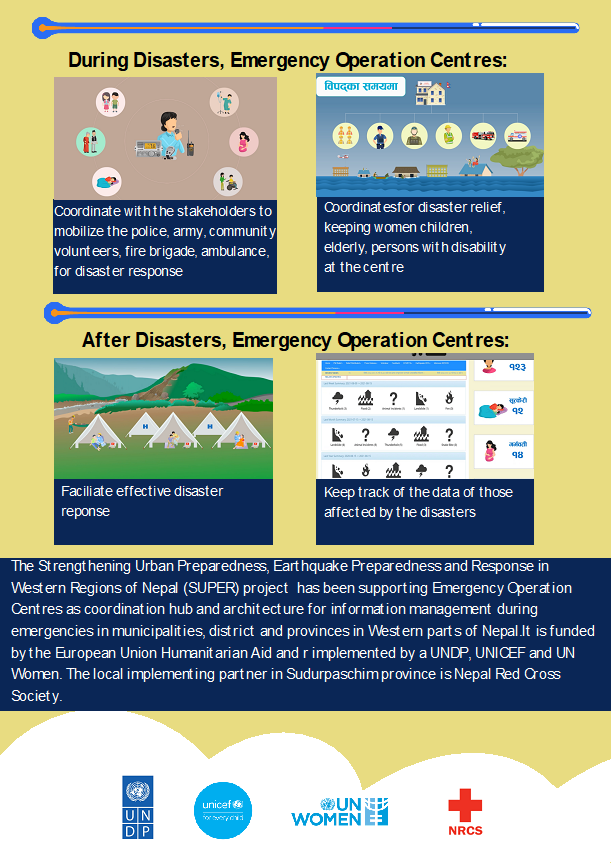

 Locations
Locations